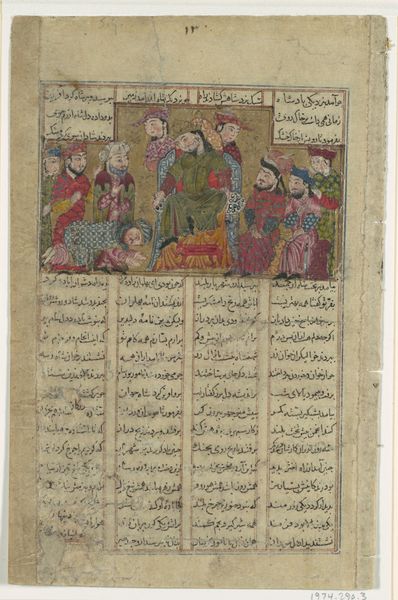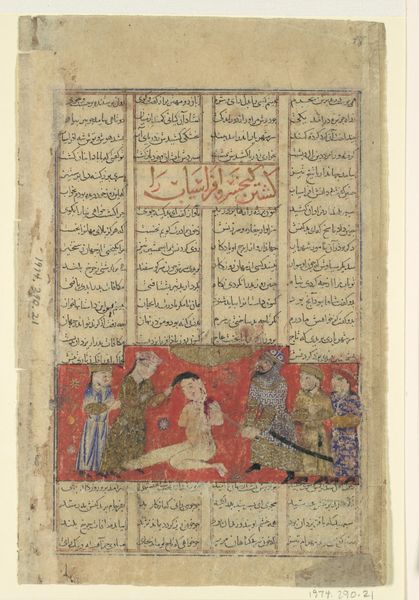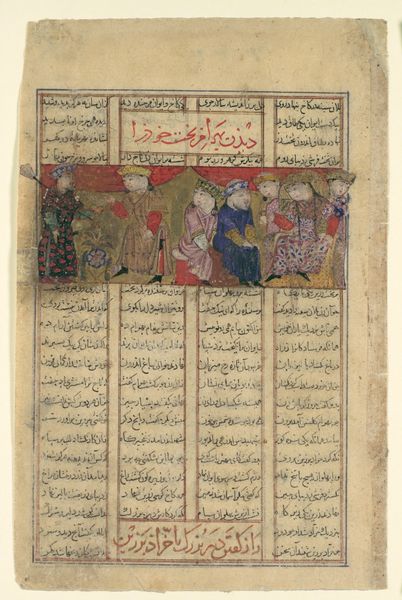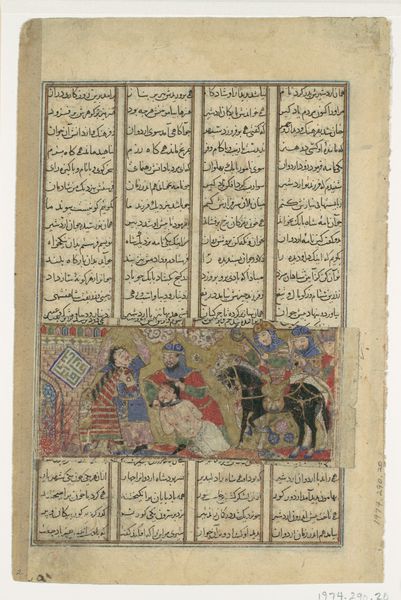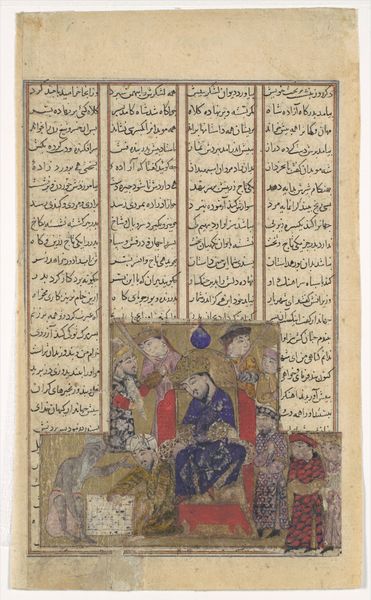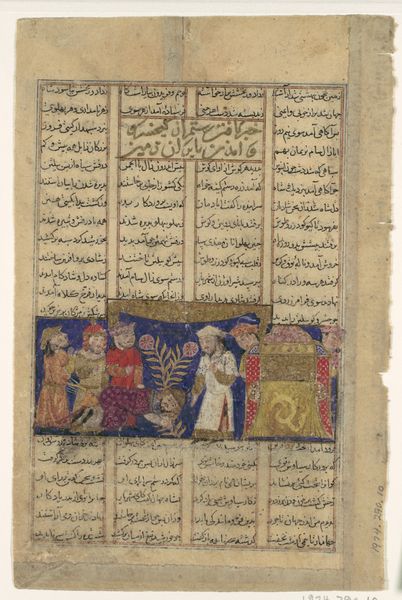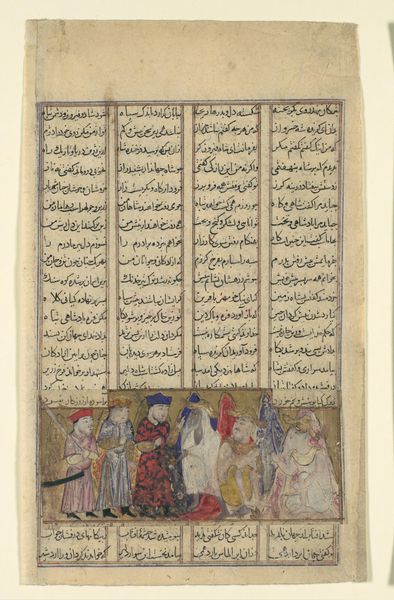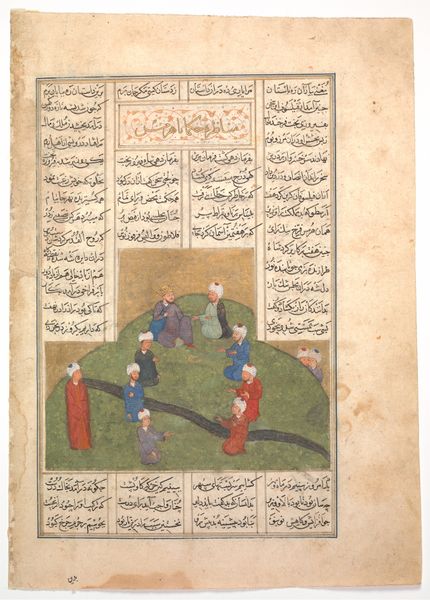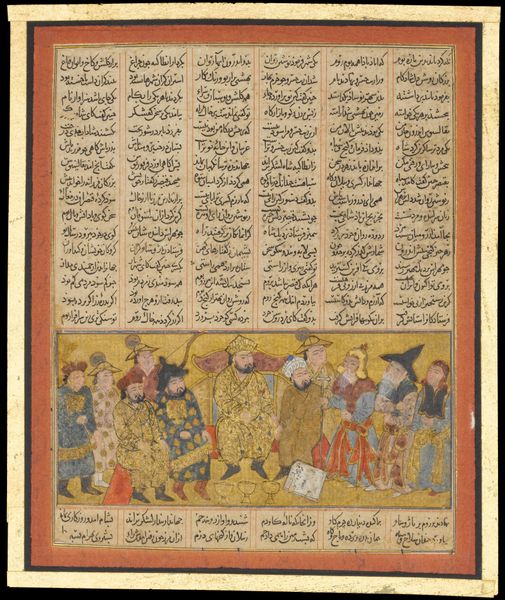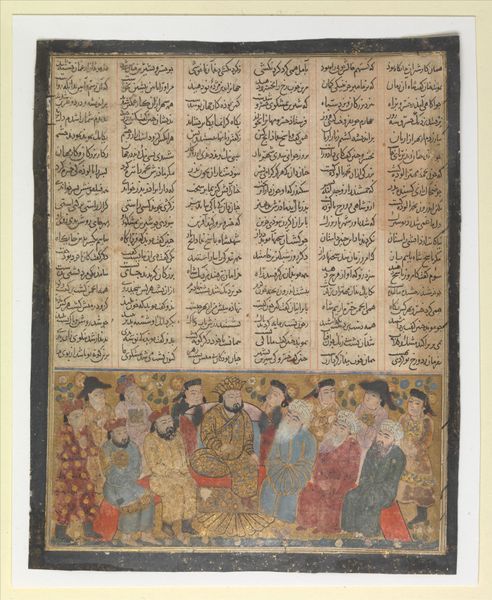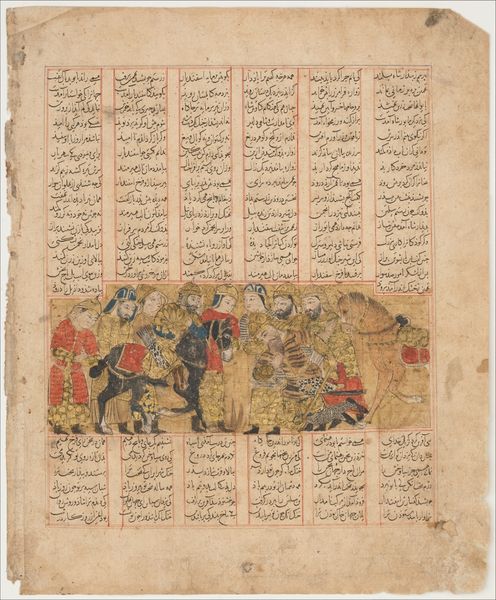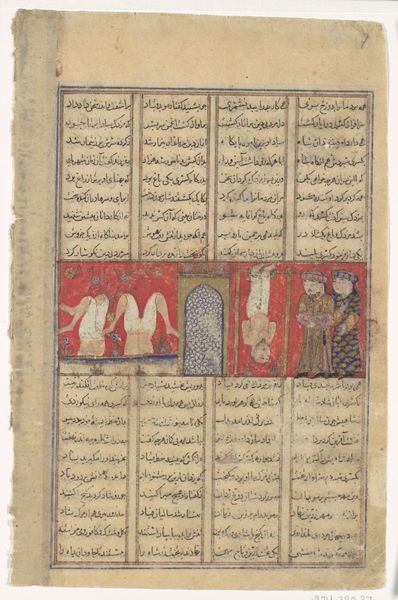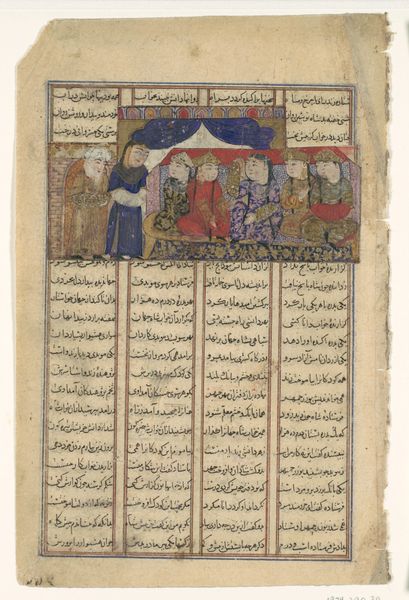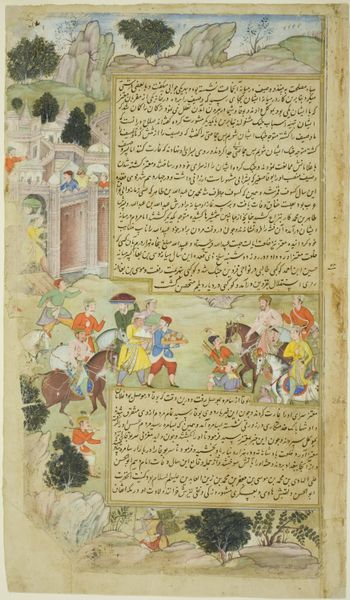
Illuminated Bookbinding of the Gulistan of Sa'di c. 17th century
0:00
0:00
tempera, painting
#
portrait
#
narrative-art
#
tempera
#
painting
#
book
#
asian-art
#
figuration
#
islamic-art
#
miniature
Dimensions: 26 × 9.7 cm (10 /14 × 6 9/16 in.)
Copyright: Public Domain
Curator: Up next, we have an illuminated bookbinding from the 17th century, showcasing a scene from the "Gulistan of Sa'di," and currently residing here at the Art Institute of Chicago. Editor: It’s gorgeous, there's a lively, courtly scene painted on this small-scale bookbinding—almost jewel-like, in its detail. The bright colors are remarkable, given the age. Curator: Absolutely. The "Gulistan," a collection of poems and stories, was incredibly popular in the Islamic world, and commissioning such elaborate bindings was a way for wealthy patrons to signal their status and refinement. This would have been quite an ostentatious display of wealth at the time. Editor: I’m curious about the materials. You see how the artist uses tempera to create such intricate details. How much would this detail speak to its original audience? Curator: These painted bookbindings demonstrate the sophisticated artistry within the royal courts. Notice how the composition—the figures arranged within a landscape—reflects a specific aesthetic. The emphasis on idealized figures and a carefully constructed scene reinforces social hierarchies and the patron’s vision of an ordered world. Editor: Thinking about the physical process, imagine the labor involved. Someone would have prepared the pigments, layered them carefully, and polished the surface. The frame itself, made of decorated, likely painted, layers of material. Curator: That kind of artisanal production emphasizes the skill and prestige attached to these objects. This object connects to long lines of cultural tradition. The book was central to Persian and Islamic culture. It circulated and influenced the literature for centuries to come. Editor: I can see how the scale of this book connects to its contents, stories of conduct, life and how it was originally intended to circulate between privileged people. Curator: Precisely. And thinking about today, the book survives in remarkable condition which is not only a sign of wealth, but shows its cultural value throughout time. Editor: It makes you wonder about its journey. About the hands that held it, the stories it told. A tangible artifact filled with layers of history, now on display for everyone. Curator: Indeed, it is now open to diverse interpretation, which highlights the evolving role of the object over time. It shows how value is created within a changing social and political contexts.
Comments
No comments
Be the first to comment and join the conversation on the ultimate creative platform.
